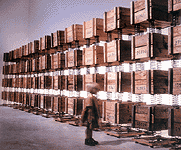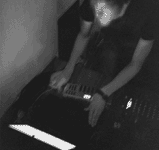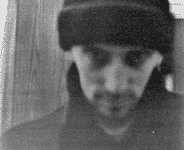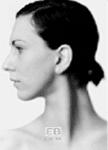| 31.07.03 - st. jakobi - 18:00 700 years St. Jakobi Stralsund |
| Krachtgever (1994
- 97) Peter Bosch und Simone Simons
(NL/E) 2,5 x 12 m sound machine - installation
While working on the theme »Resonances stimulated by mechanical vibrations« our main interest was not to amplify just one existing frequency, but to create a complex system in which various frequencies influence each other. This to give rise to unstable balances which the slightest change could disturb enough to produce an unpredictable outcome. Forced and natural frequencies of objects are so attuned to each other that the movements and sounds created by the installation can change almost imperceptibly from order into chaos and vice versa. The role of the computer is paradoxical: although it has power over the mechanics (electro-motors), it can foresee only partly the physical outcome of its decisions. Alongside unstable balances and order and chaos, another element is sound. The pure power of sound and the pure existence of sound (music) manifest remains an integral part of al our installations. The medium sound gives power over a specific place, it occupies that space: The Krachtgever permits us to generate vibrations with which we can fill the space. Sound waves are after all vibrations. The Krachtgever (»Invigorator«) consists of minimum seven, maximum fourteen 2.50 metres high stacks of four wooden boxes each, with a total width of 6 to 12 metres. The boxes are joined together with metal springs, both horizontally and vertically. One oscillating motor is attached to each stack. These motors are driven by a computer that by varying the speed at which the motors rotate causes interesting interferences between the stimulated vibratory and resonant frequencies of the construction. Depending on the combination of selected motors and frequencies each box can be vibrated independently, while also one complete stack can be brought into one periodical movement. Also combinations of vibrations can be generated to occur simultaneously at different positions within the system. Each box contains different materials. These »rattles«, varying in volume, weight and sound possess there own resonating characteristics. When stimulated by an oscillating motor the combined vibrations from all the elements - the springs, the boxes, the various rattles in the boxes, etc. - produces an extraordinarily complex whole. The physically extraordinarily complex properties of the construction itself guarantee an even less predictable texture at the micro-level: Also here the future is influenced by the past. A strong resonance of a certain box (or boxes) is not extinct at once and will therefore influence the outcome of a following »phrase«. This means that the same phrase can sound completely different, depending on the phrase played before. Another artistical tool that is used in every performance is the adaptation of the work to spatial and acoustical circumstances. Text: Bosch & Simons. From: »Cyberarts98«, editors Hannes Leopoldseder, Christine Schöpf, Springer Verlag Wien, New York, 1998, pp. 200-203 Peter Bosch (*1958) studied at the University of Leiden and Amsterdam (1976-83) and psychology and sonology at the Royal Conservatory in The Hague (1986-87). > http://www.boschsimons.com Simone Simons (*1961) studied at the audiovisual department of the Gerrit Rietveld Art Academy in Amsterdam (1980-85). Since the beginning of their cooperation 1985 Bosch & Simons have dealt with quite a number of activities such as performances, concerts and theatre productions. In the last years they have concentrated especially on the development of »musical machines« which, by balancing on the edge of order and chaos, have certain creative powers. Their work has been shown a.o. at the Z.K.M., Karlsruhe (1991 and 93), at ARTEC 95, Nagoya and at the ISEA's 95, 96, 2000 and 2002 (Montréal, Rotterdam, Paris, Nagoya). At the Prix Ars Electronica 1998, Linz they received a Golden Nica in the section of Computer Music for the Krachtgever. At the 29th Competition of Electroacoustic Music and Sonic Art, Bourges 2002 their piece »Cantan un Huevo« obtained a Mention in the category »work for installation or environment«. supported by: Royal Embassy of the Netherlands and Institut Valencia de la Musica |
| 31.07.03
- garage- 21:00 reformat c(lub) I |
1. POIL
(Kiel/D)
2. Andrey Kiritchenko (UKR)
1991 - start a rock band, 1996 - start weekly radio show "free zone", 1997 - start weekly tv show "free zone", 1998 - start working as dj in Deep club / Kharkov, start ambient techno project "Sidhartha", 1999 - start Polyvox Populi supporting circle, 2000 - start "Nihil Est eXcellence", 2001 - start labeling music under Nexsound, start producing Alphonse de Montfroyd, start making microwave music under own name. 2002 - best ambient artist by DasMusik, collaborations with Kim Cascone, Jonas Lindgren, Jeff Surak, Francisco Lopez, Kotra, Moglass, Mantikhora. 2003 - Solo concert at the festival garage > http://www.nexsound.org 3. EVA BE (sonarkollektiv) & mcc /microfish (different drummer,sonarkollektiv) guitar: Boris m. (micatone/sonarkollektiv) (Berlin) ...reggae, ragga, danchall, downbeat..
|



